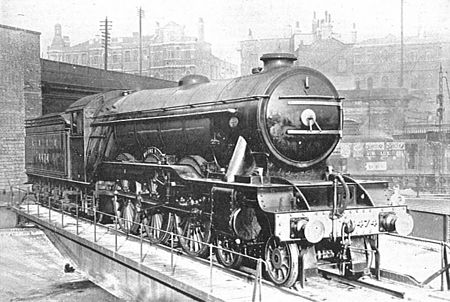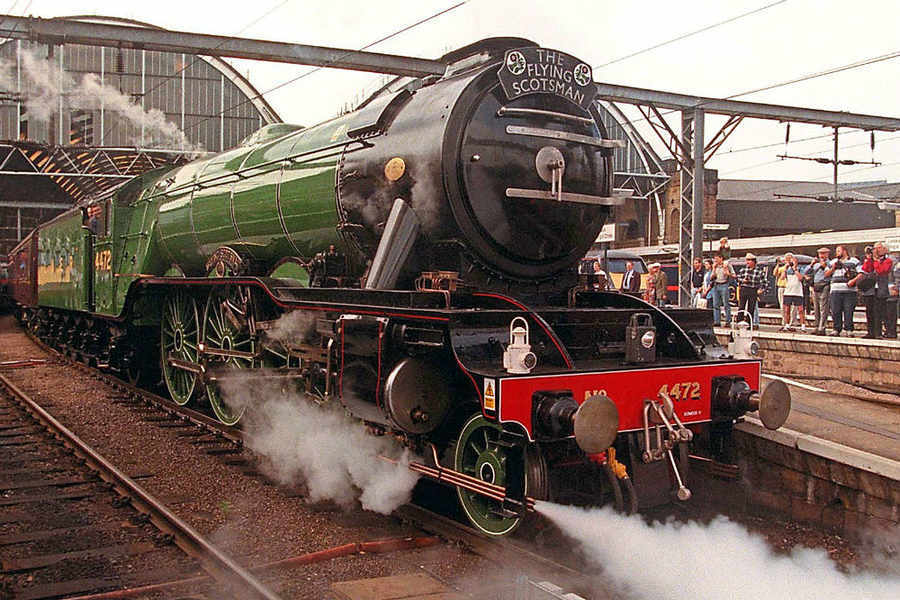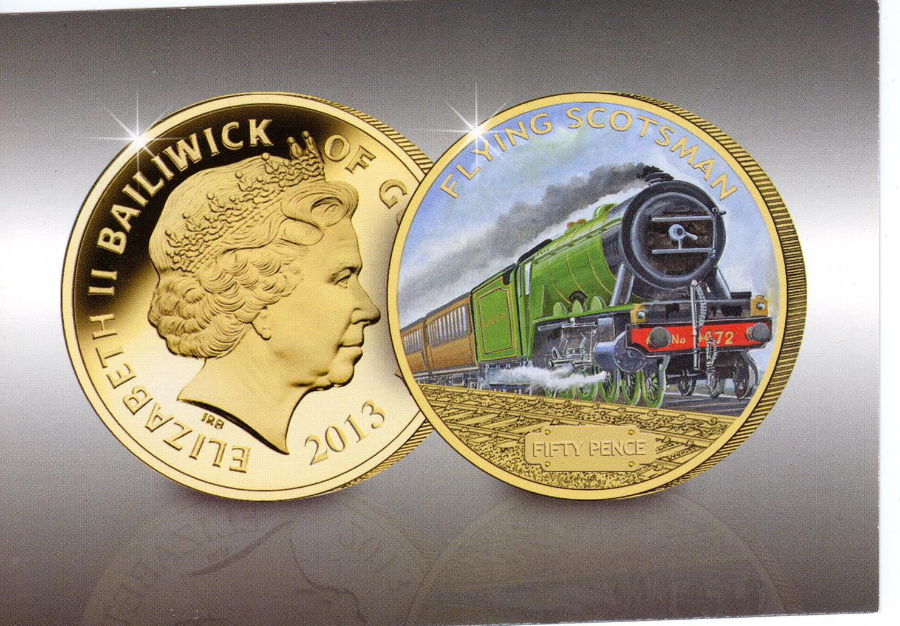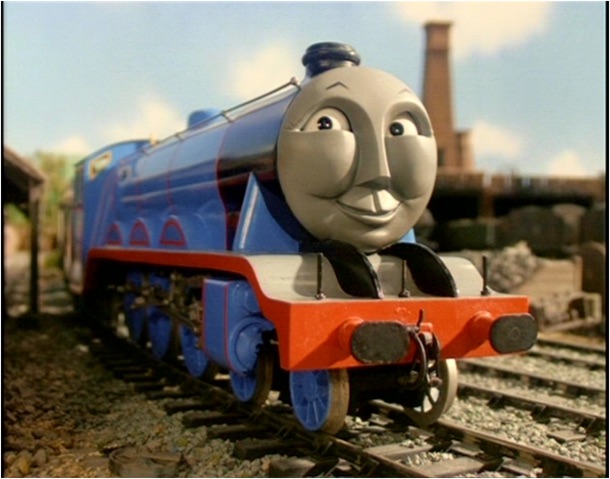The LNER Class A1 and A3:
The Great Northern Railway, Gresley's Employer, was among the partners in the East Coast Joint Stock, a group of Companies who used a shared pool of Carriages (Brit English for Passenger train cars). These trains, and other GNR Expresses were often hauled (in GNR territory) by the GNR's veteran Atlantics (the nickname for a locomotive with a 4-4-2 Wheel Configuration) designed by Gresley's predecessor, H.A. Ivatt. These were fine locos, but the trains were growing too heavy for them. Gresley set about to design a bigger Express Locomotive, and succeeded.
The 4-6-2 "Pacific" configuration was the one he picked. It was a logical stretch of the Atlantic-it had a 3rd Driving axle, allowing for more power and a larger Boiler, making for a stronger, faster machine. It was also common for Expresses in America, and Gresley used the Pennsylvania Railroad's K4 Locomotive Class (a notable one itself, and Pennsylvania's State Steam Locomotive) as a basis.
.org/image/7ckiadthf/]

[/url]
Above: an A1, 4474
Victor Wild, at London King's Cross Station, the London Terminus of the GNR/LNER Network
The first two locomotives, 1470
Great Northern and 1471
Sir Frederick Banbury were constructed at the GNR Doncaster Works in 1922. They were successful, and the GNR Board ordered 10 more. These 10 were under Construction at Doncaster when the GNR was grouped into the LNER. The machines were successful in part due to their use of Gresley Conjugated Valve Gear, and various other ideas, some modeled after the K4.
The Grouping of 1923 was a key event in British Railway History. The Country's 120 Railway Companies were grouped into 4 Railways, nicknamed the "Big Four." These were:
The
London, Midland, and Scottish Railway (LMS), operating throughout the Midlands, Northwest England, some of Wales, and much of Scotland
The
Great Western Railway (GWR), operating in Southwest England and in Wales
The
Southern Railway (SR), operating in South and Southeast England
The
London and North Eastern Railway (LNER), operating in East Anglia, the East Midlands, North-East England, and Eastern Scotland. This included Gresley's GNR.
All 4 railways had lines into London. The LNER and LMS had parallel mainlines from London to Scotland, and competed with each other on every aspect of mainline traffic
Gresley became the CME (Chief Mechanical Engineer) of the new LNER, and continued with his design, as opposed to the less coal-efficient design of the North Eastern Railway, which was also amalgamated into the LNER.
The new LNER needed a locomotive that could run all the way from London to Edinburgh, but the A1 was only designed for the <200 mile distances of the GNR network. As such, improvements were needed.
After comparative Exchange trials between the A1s and the GWR's Castle Class, Gresley improved his design. He adopted several useful GWR features, which allowed the Pacifics to travel unprecedented Distances without stopping.
.org/image/npkk24fkh/]

[/url]
Above: 4472
Flying Scotsman, the only surviving A3 Pacific.
The outcome of these Experiment was the A3 'Super Pacific'. These had higher boiler pressure, larger cylinders, modified valves, and increases Superheat. Also added was Left-hand, as opposed to Right-hand, drive, which made sighting Signals easier. Eventually, all A1s were rebuilt as A3s. This design came to be broadly successful, but Gresley kept experimenting. He tried out various features, and eventually moved on to the A4's
Eventually, the A3's day has passed. It was replaced by the Streamlined A4 class on the fastest Expresses, and all members of the class but one were scrapped by 1966, when Diesel Locomotives took over Passenger Operations.
Accomplishments:
Test bed for numerous Gresley innovation, including Conjugated Valve Gear and the Corridor Tender
First Locomotive to be reliably recorded running over 100mph
A member of the class,
Flying Scotsman, is broadly considered the most famous British Railroad design
Below: a
Flying Scotsman commemorative Coin
.org/image/t6m8kw2it/]

[/url]
In Fiction:
In
The Railway Series, the book series on which the kids' TV show "Thomas and Friends" is based (and in the TV series itself), the A1 makes an appearance. Gordon, the Express Locomotive, is supposed to be the "A0" prototype for the Pacifics. As a child, I was an avid watcher of the show, and Gordon was my favorite character. It is because of him that I read about the A1/A3 design, Gresley, and the LNER.
Flying Scotsman has made appearances in many Children's Books
Below: Gordon, the fictional A1, possibly more famous than any of his RL "Counterparts"
.org/image/h2d4vsc3v/]

[/url]